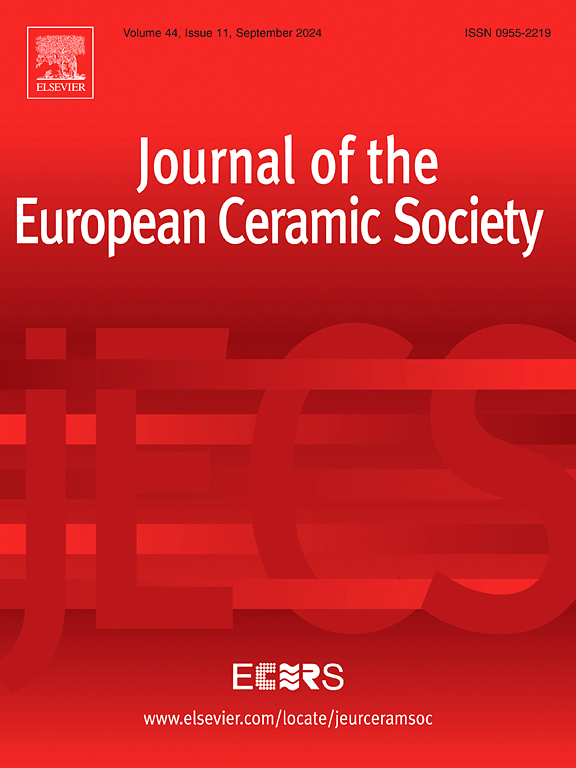Investigating the effect of spark plasma sintering temperature and post-sintering annealing in LiNi0.5Mn1.5O4 for its ideal design towards practical battery applications
IF 5.8
2区 材料科学
Q1 MATERIALS SCIENCE, CERAMICS
Journal of The European Ceramic Society
Pub Date : 2025-05-09
DOI:10.1016/j.jeurceramsoc.2025.117524
引用次数: 0
Abstract
In this work, the effect of spark plasma sintering (SPS) and post-annealing in pure Ar and O2 on structure, ac/dc-conductivity, impedance, and electronic properties of LiNi0.5Mn1.5O4 (LNMO) are investigated, which establish a roadmap for the design of an ideal compound. Structural analysis using XRD reveals that the unit cell volume increases with SPS temperature and post-annealing in Ar and decreases in O2 due to a reduction in oxygen vacancies. The dc-conductivity shows the dominance of SPH conduction up to 200 K, while Mott-VRH conduction prevails until 168 K. Frequency dispersion modeling of ac-conductivity (σac) with modified JPL supports the NSPT model, and scaling of σac follows the modified Summerfield model. In addition, DRT clearly distinguishes grain, grain boundary, interfacial, and electrode contributions and shows that post-annealing in Ar(O2) can be effectively used to increase(decrease) the grain and grain boundary resistance, which can be utilized to design and property-tune LNMO for practical applications.
研究火花等离子烧结温度和烧结后退火对LiNi0.5Mn1.5O4的影响,使其在电池中的理想设计更接近实际应用
本文研究了放电等离子烧结(SPS)和在纯Ar和O2条件下后退火对LiNi0.5Mn1.5O4 (LNMO)结构、交直流电导率、阻抗和电子性能的影响,为设计理想化合物奠定了基础。XRD结构分析表明,随着SPS温度的升高和Ar退火后,晶胞体积增大,O2退火后,由于氧空位的减少,晶胞体积减小。直流电导率在200 K以下以SPH传导为主,而在168 K以下以Mott-VRH传导为主。修正JPL对交流电导率(σac)的频散建模支持NSPT模型,σac的标度采用修正的Summerfield模型。此外,DRT清晰地区分了晶粒、晶界、界面和电极的贡献,并表明在Ar(O2)中退火后可以有效地增加(降低)晶粒和晶界电阻,这可以用于设计和调整实际应用中的LNMO。
本文章由计算机程序翻译,如有差异,请以英文原文为准。
求助全文
约1分钟内获得全文
求助全文
来源期刊

Journal of The European Ceramic Society
工程技术-材料科学:硅酸盐
CiteScore
10.70
自引率
12.30%
发文量
863
审稿时长
35 days
期刊介绍:
The Journal of the European Ceramic Society publishes the results of original research and reviews relating to ceramic materials. Papers of either an experimental or theoretical character will be welcomed on a fully international basis. The emphasis is on novel generic science concerning the relationships between processing, microstructure and properties of polycrystalline ceramics consolidated at high temperature. Papers may relate to any of the conventional categories of ceramic: structural, functional, traditional or composite. The central objective is to sustain a high standard of research quality by means of appropriate reviewing procedures.
 求助内容:
求助内容: 应助结果提醒方式:
应助结果提醒方式:


